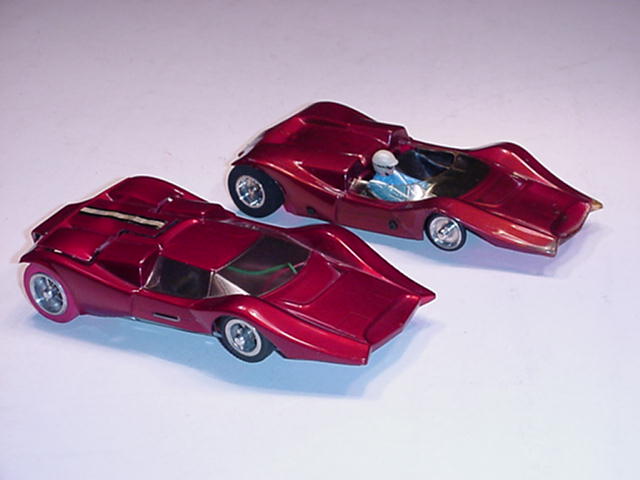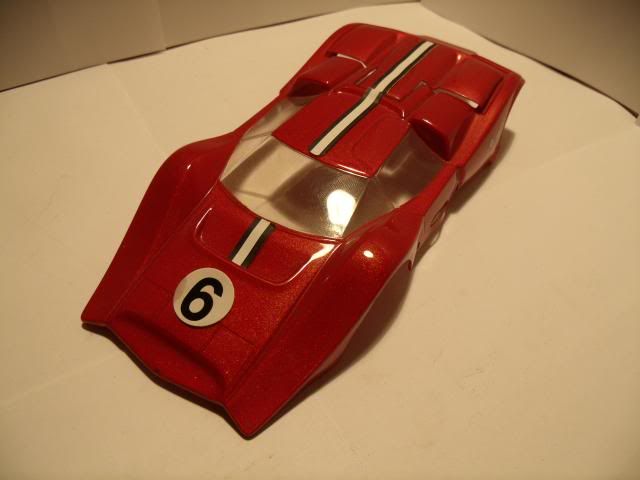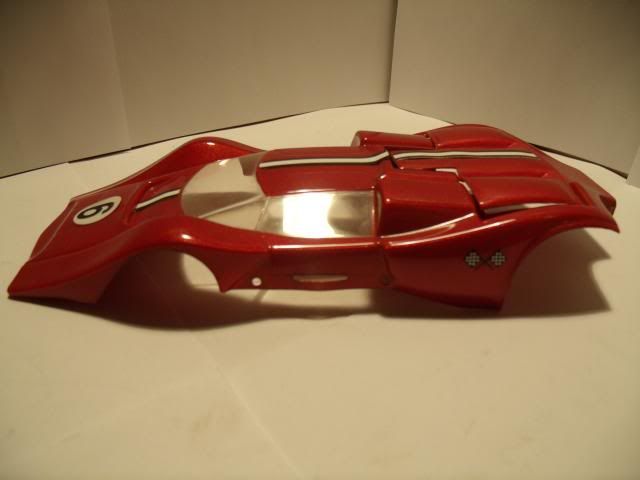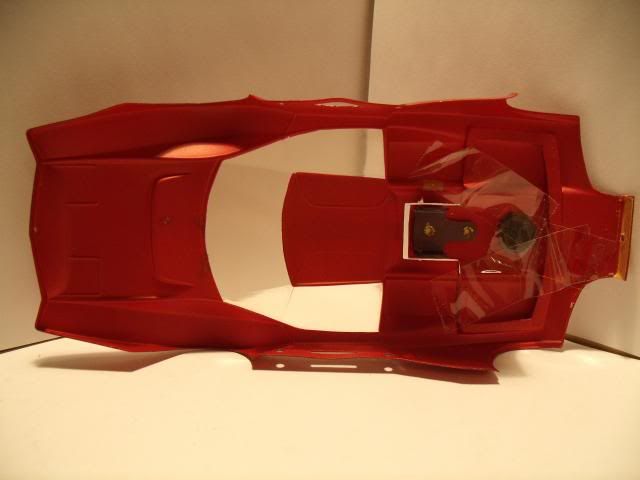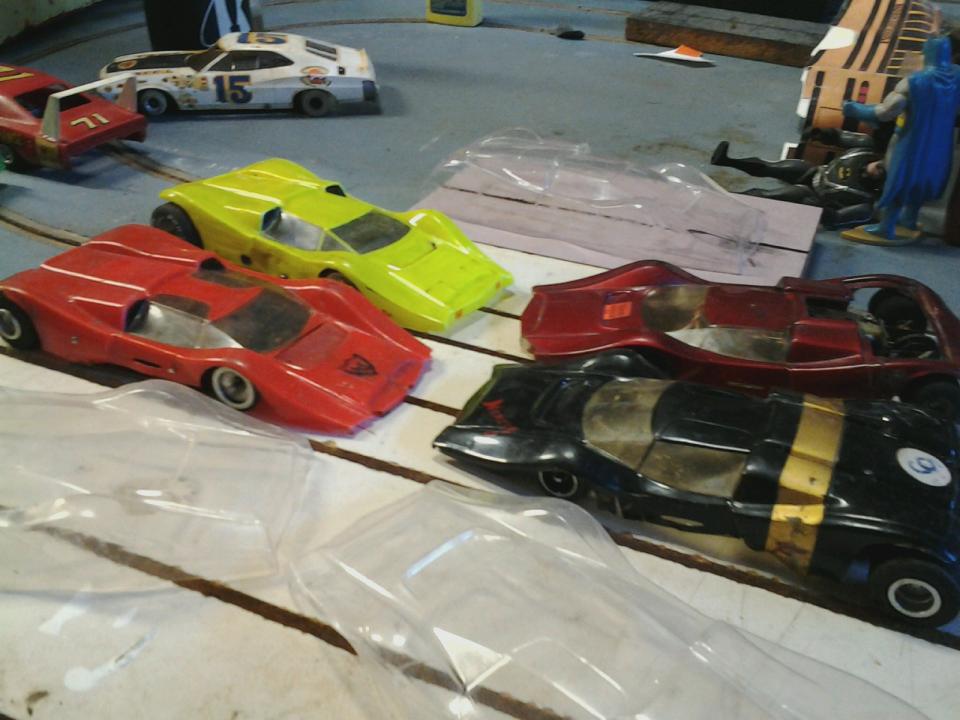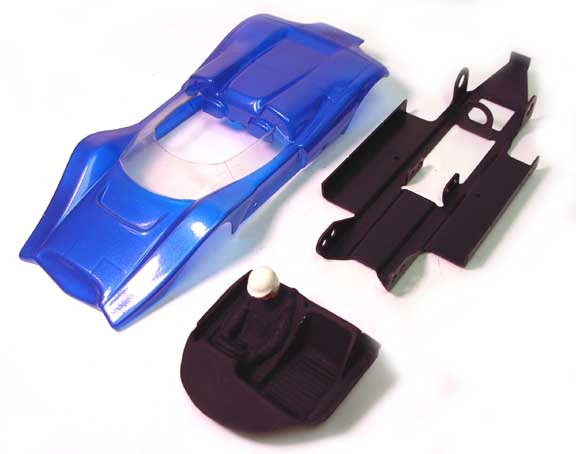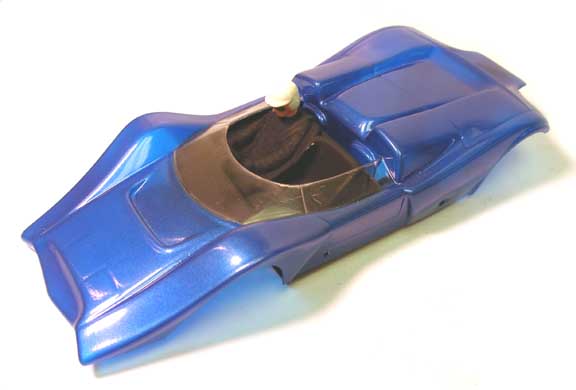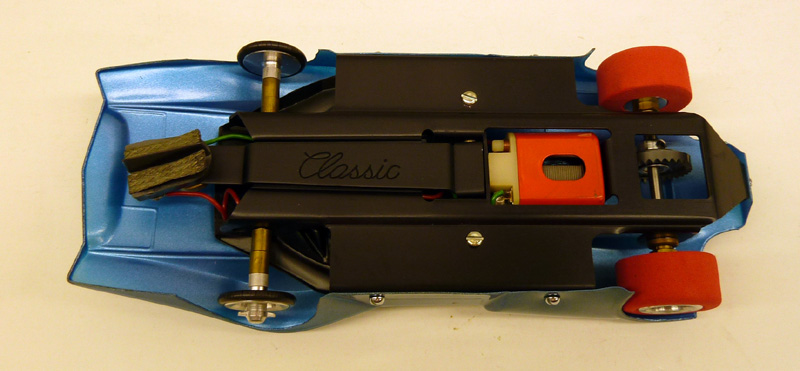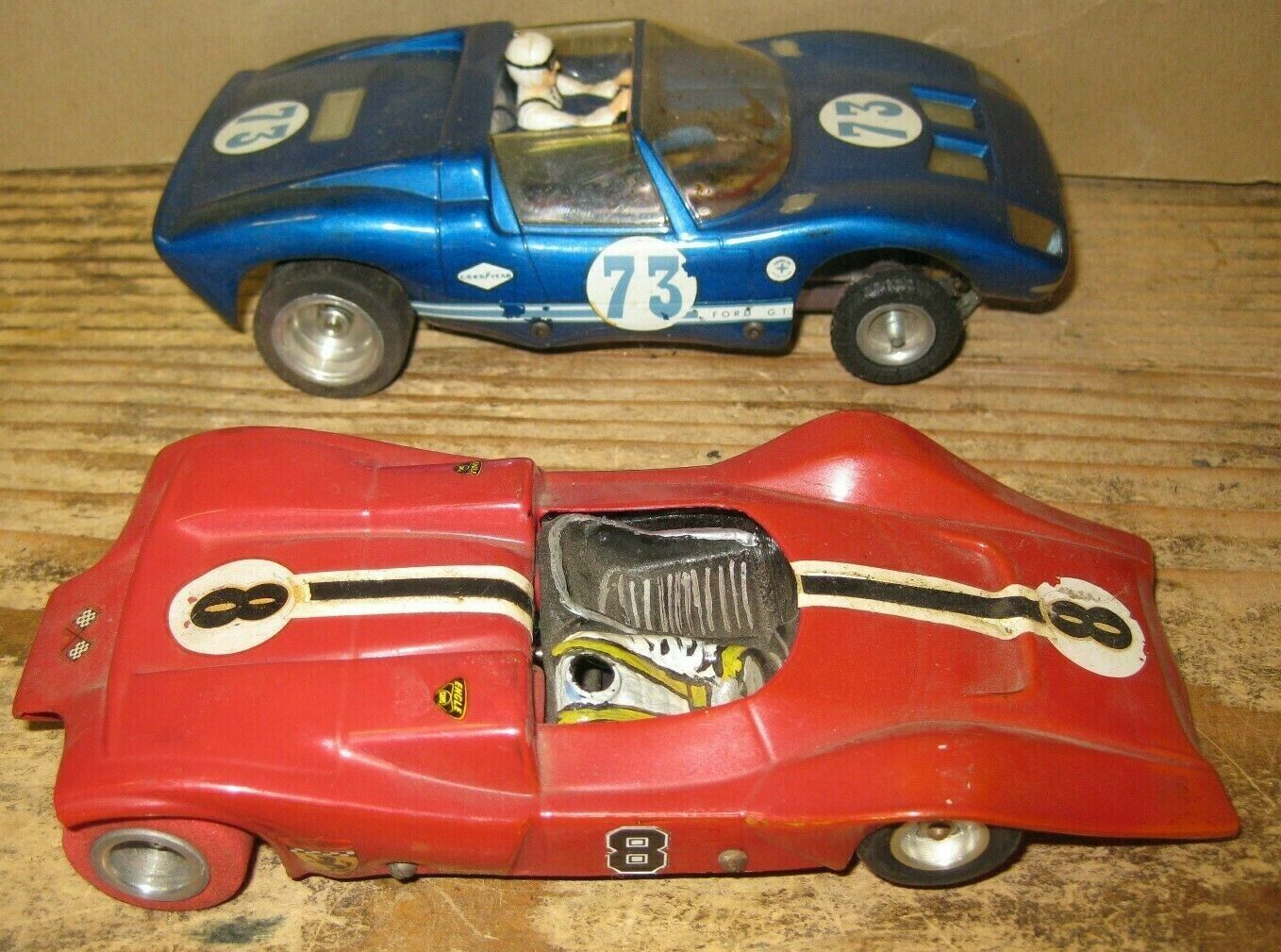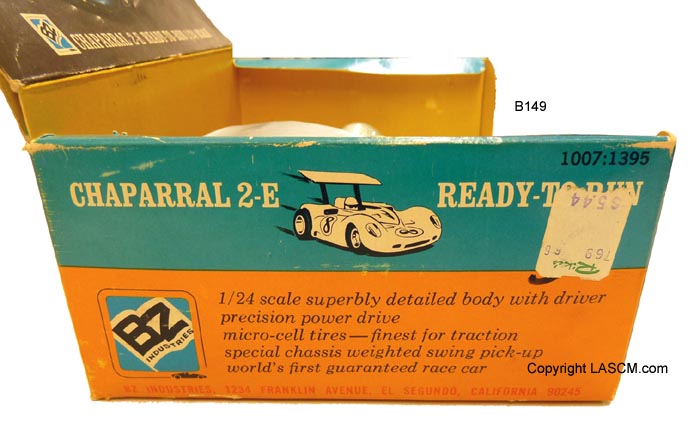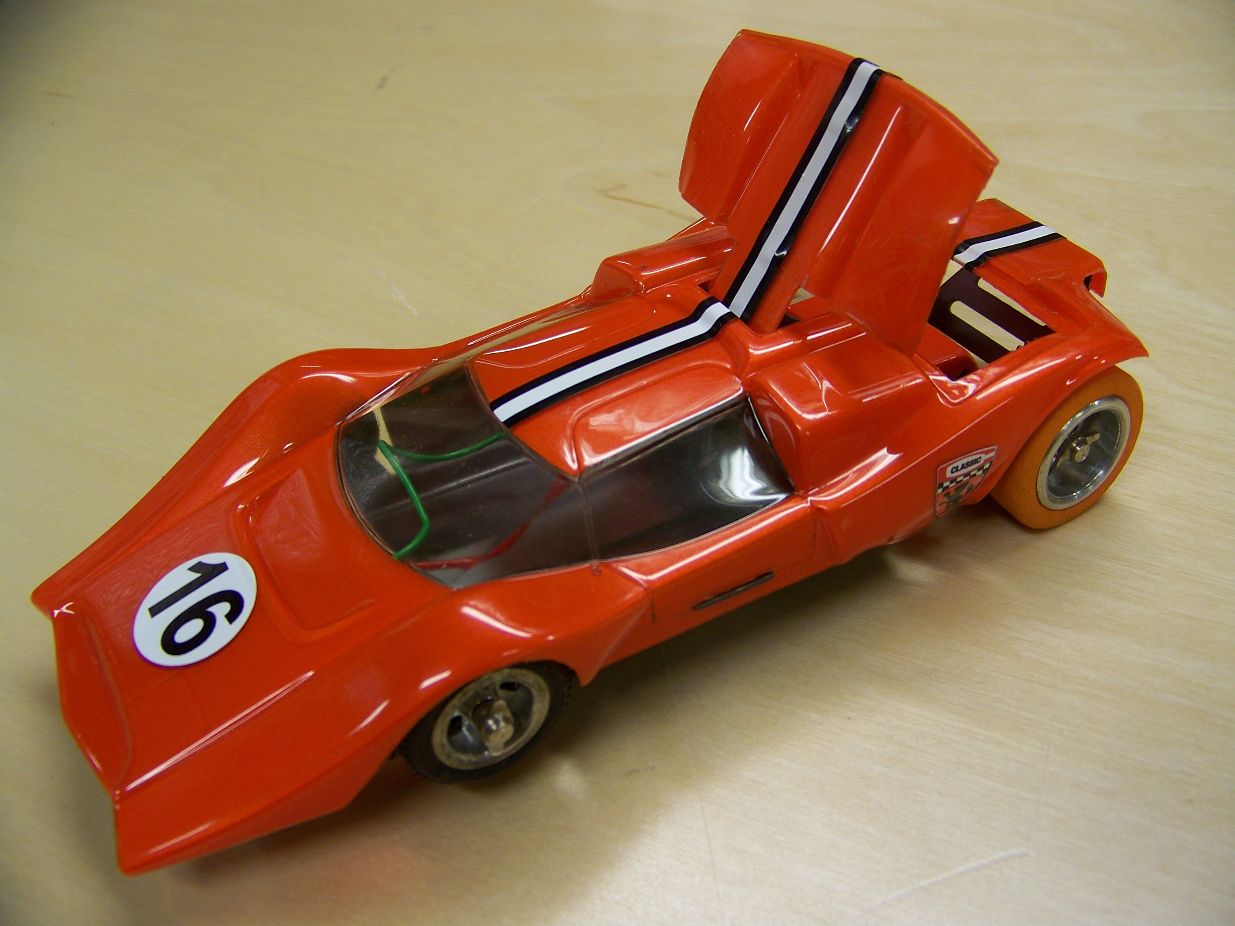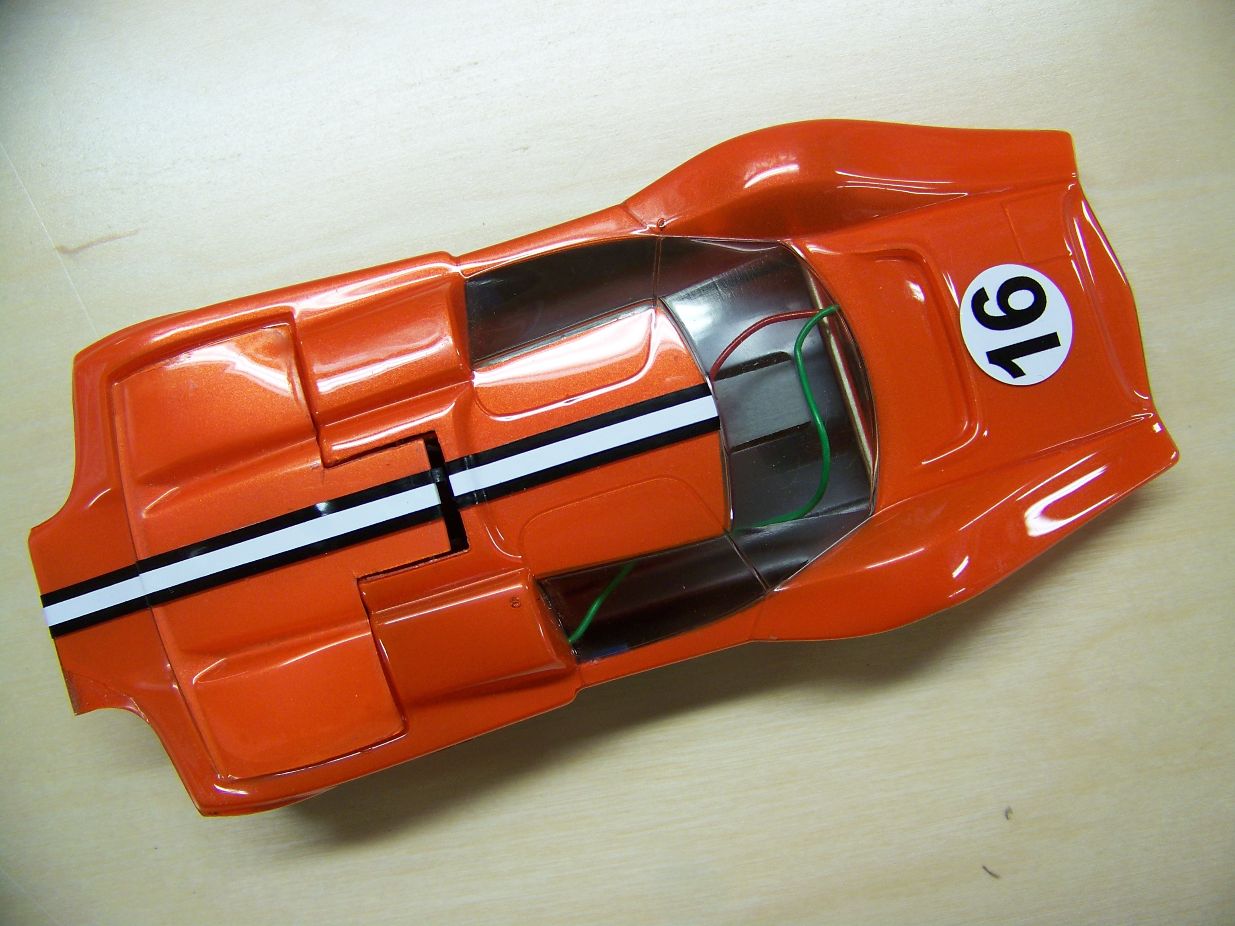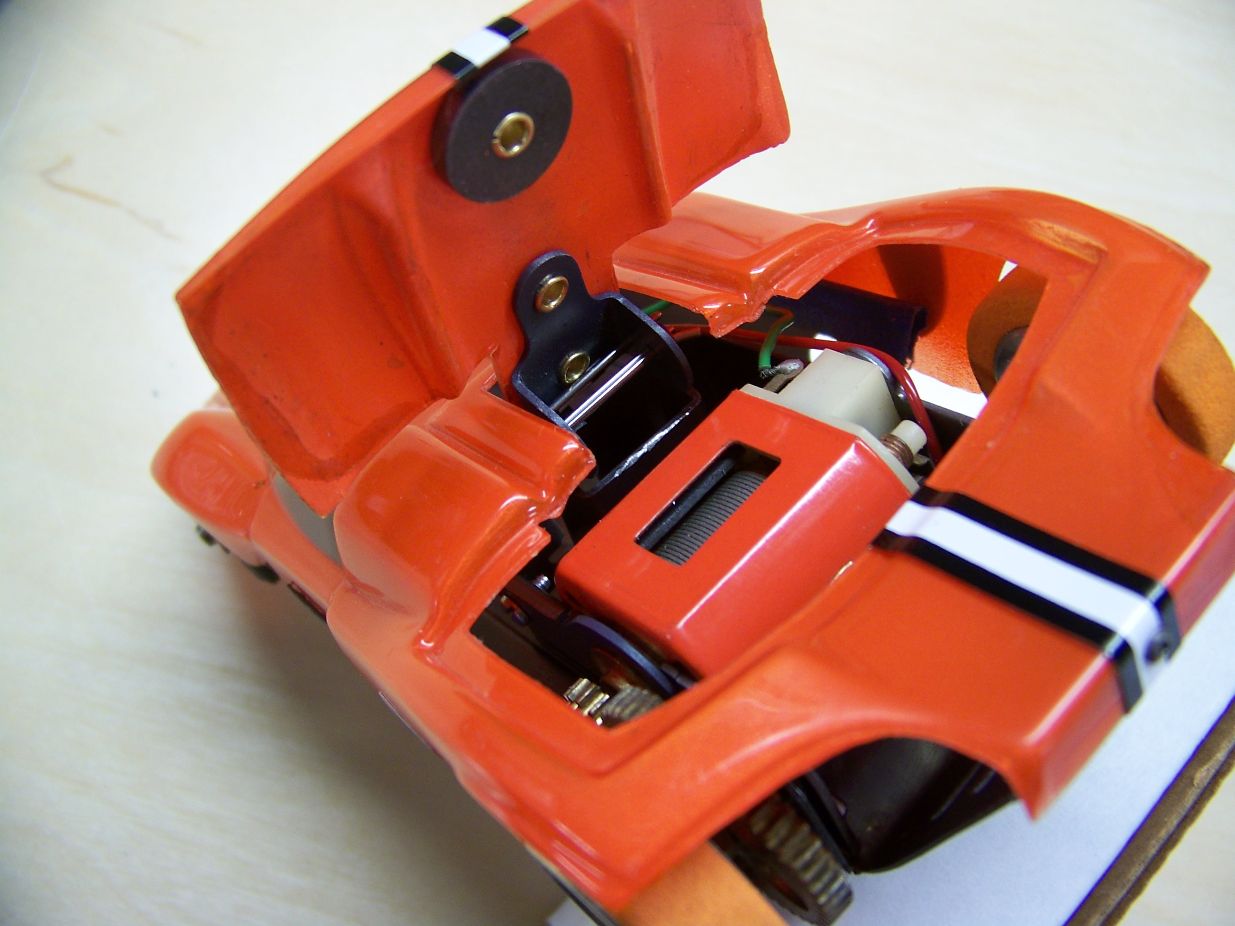Matt,
lots of speculation is necessary to make some sense of what happened in the last days of 1/24 scale commercial slot tracing in America. In Classic's case, I had the advantage of a long interview with several of the company's employees, from the general manager to the man of all trades, both with elephant-like memories, and while such interviews were done at different times, their recollections matched.
Very few kits of the Stinger Roadster were produced before Sam Bergman, the company's owner, pulled the plug. In fact over the years, and so far, there is no news to contradict our knowledge, only ONE intact kit appears to have survived. There never were "different versions" of this kit, as the limited production may not even lasted more than a day... but, there were plenty of surviving parts, bodies and chassis, remaining and ending at REH, the bodies already trimmed, but somehow the cockpit details may not have made it for whatever reason.
It is almost certain that the vast majority of the existing examples of Stinger Roadsters were concocted from that lot of parts, and when REH marketed the parts (seen on their mid-1970s retailer listings), they likely supplied a vac formed cockpit with them, either the then abundant Auto Hobbies (an almost exact match of the Classic's, except for the driver being on the right side), or a Lancer or Russkit interior.
Cars built from the genuine kit would have the original clear plastic cockpit, painted by the customer. I have only seen a handful of these over the years.
Now, some collectors have shown to me, rather poorly painted Stinger Roadster bodies attempting to match one of the standard red, green or blue Classic colors, claiming them "genuine". To put an end to that urban legend, the Stinger Roadster was only and very briefly marketed as a complete kit with an unpainted body, and NEVER issued as a clear or painted body kit by Classic, but the "Singer II", that is a Stinger coupe with its wing molded as integral part of the body, was marketed on a card also used for tires, with the name "Stinger Roadster", which confused some collectors for a while.
Also out of Australia came (circa 1995) a plain-while box (with Classic markings) containing six of these "Stinger II" RTR cars in orange and blue colors, their chassis devoid of the wing raising wire, separated by corrugated inserts inside the box, but these never appeared in the USA or a Classic dealer sheet. How many were produced? Big mystery here.
As far as the BZ Chaparral 2E, it is almost certain that it never reached the actual store shelves. The number of examples that surfaced makes this plausible: samples were sent to the largst distributors in the (vain) hope of obtaining orders for them, but no distributors would want to risk any more investment in product that simply, stopped selling.
The samples were then disseminated over time, the ones found in the USA ending being raced, with their wing struts mostly hacked by their (obviously young) owners, the ones found in France being the result of a case of 12 cars sent to the European distributor in Paris.
Seven of the known, complete genuine examples were found in France, six of them to a single person, and the only two remaining boxed examples have now returned to the USA.
Only ONE complete, and even boxed example has ever surfaced in the USA so far, while under a dozen or so of loose bodies or hacked bodies still attached to a chassis have surfaced, and this was several years ago with not a single example ever since.
This is what we know... and where the fairy tales begin.









